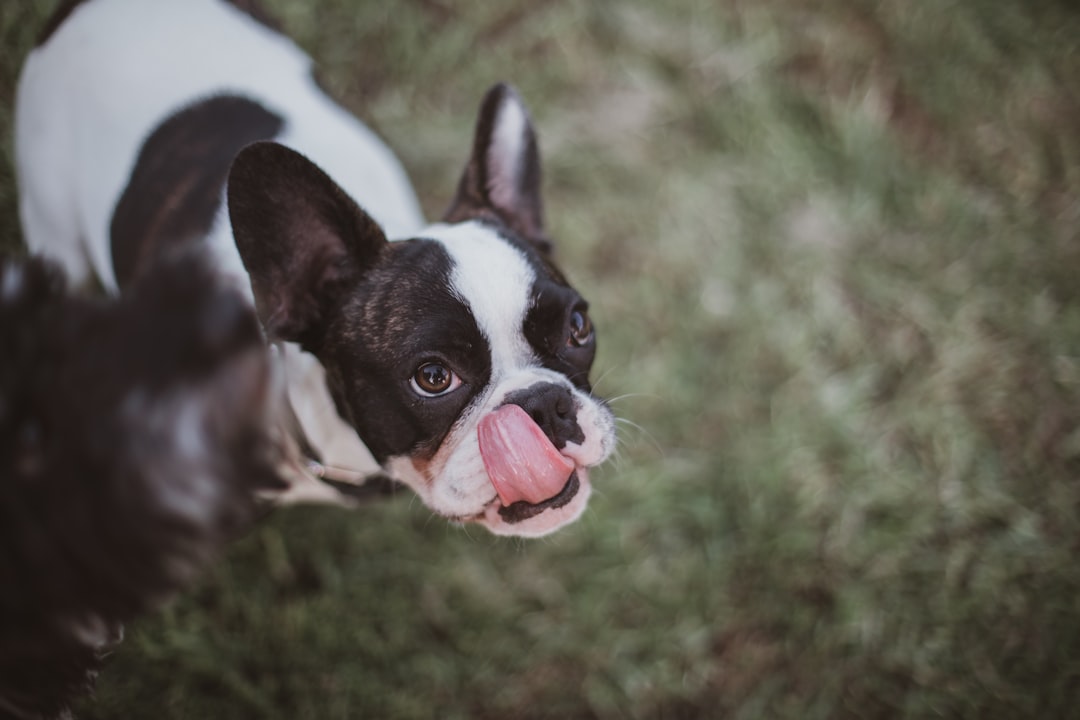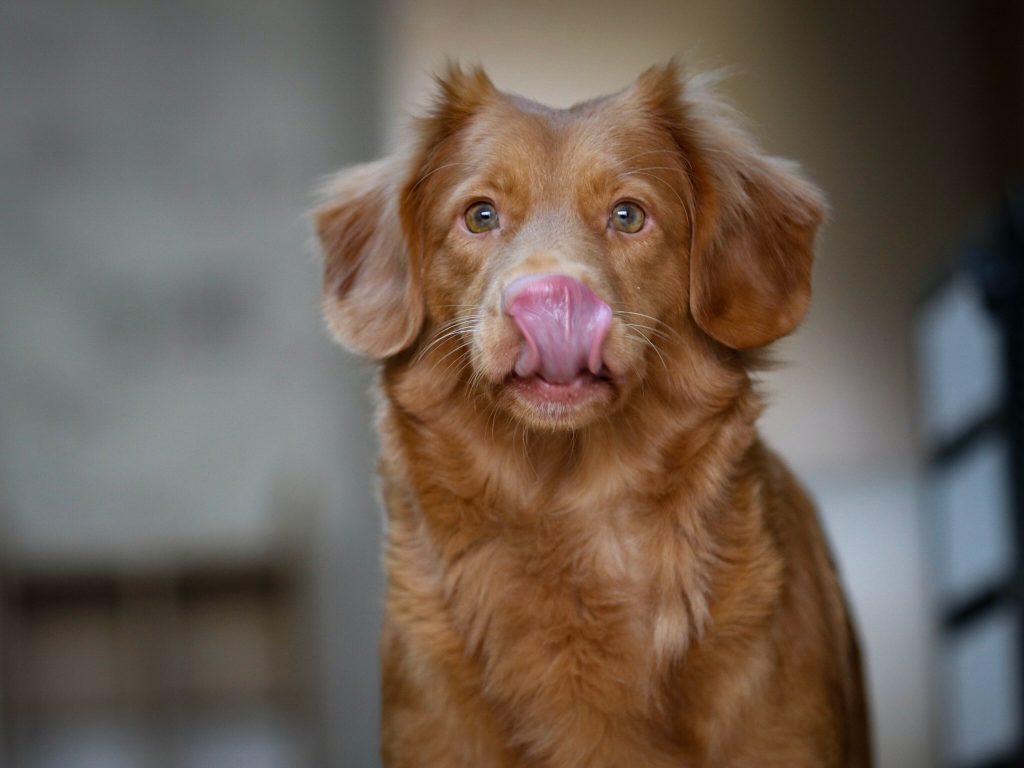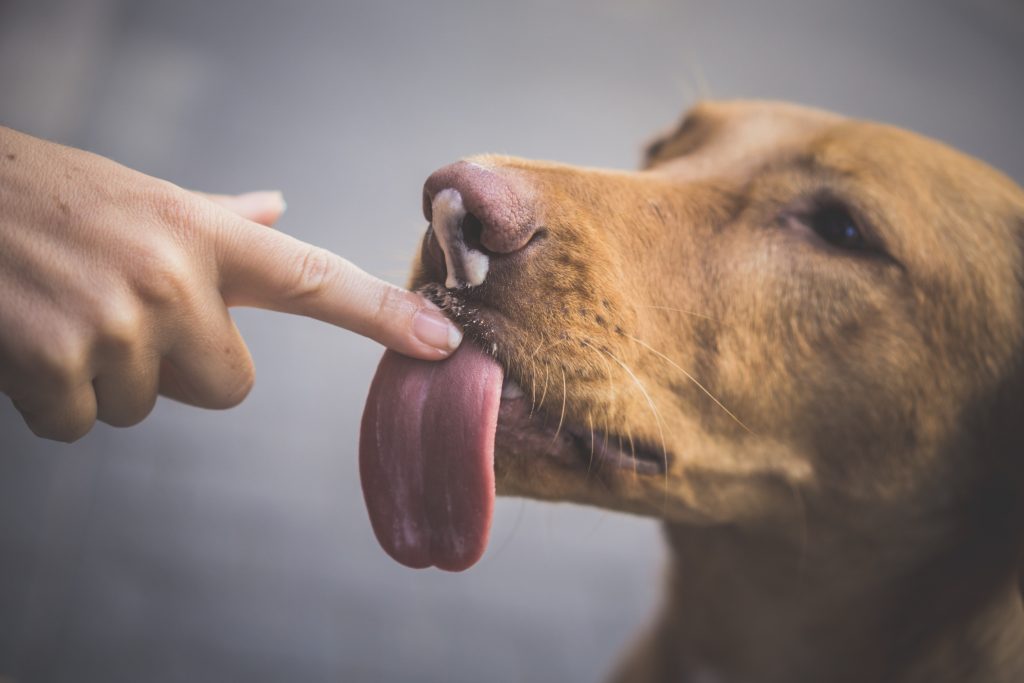This article explores the social bonding role of dog licking in human-dog relationships, including the nature of dog licking, managing excessive licking behavior, and understanding the emotional aspects of this behavior to strengthen the bond between dogs and their human companions.

The Nature of Dog Licking
Dog licking is not only a natural behavior that begins in puppyhood but also serves as a fundamental form of communication and social interaction between dogs and their human companions. For instance, when a dog licks their owner’s face or hands, it can be a display of affection, submission, or an attempt to seek attention. Understanding the underlying reasons for this behavior is pivotal in deciphering the emotional connection it establishes in human-dog relationships.
Furthermore, it is noteworthy that excessive licking can be a cause for concern as it may indicate stress, anxiety, or an underlying medical issue in dogs. For example, dogs may excessively lick humans as a coping mechanism for stress or due to separation anxiety. In such cases, it becomes essential for dog owners to address the root cause of the behavior rather than simply discouraging the licking. This can be achieved through the implementation of consistent rules for dog behavior within a family and the use of confidence-building exercises to alleviate any potential stress or anxiety the dog may be experiencing. By understanding the motivations behind excessive licking, dog owners can effectively manage this behavior and strengthen the bond with their canine companions.
 Managing Excessive Dog Licking
Managing Excessive Dog Licking
Managing excessive dog licking behavior requires a multifaceted approach that encompasses consistent rules, redirection techniques, and understanding the underlying reasons for the behavior. Consistency in setting rules for dog behavior, such as not allowing excessive licking during specific activities or interactions, is fundamental in communicating expectations to the dog. For instance, if a dog excessively licks when guests visit, establishing a rule that the dog must sit calmly and wait for permission before approaching visitors can effectively manage the behavior.
Moreover, redirection of excessive licking through confidence-building exercises can be an effective strategy. For example, engaging the dog in obedience training and agility exercises not only redirects their focus but also boosts their confidence, thus reducing the need for excessive licking as a coping mechanism. Additionally, it is important to identify the triggers that lead to excessive licking. By recognizing situations or stimuli that prompt the behavior, dog owners can proactively manage and redirect the dog’s attention before the licking becomes excessive.
Furthermore, patience and positive reinforcement play crucial roles in managing excessive licking. Changing deeply ingrained habits, especially in cases of persistent excessive licking, requires time and consistency. By remaining patient and calm while enforcing the rules, dog owners can create an environment that encourages the desired behavior and discourages excessive licking. Through these management techniques, dog owners can effectively foster a healthy and balanced relationship with their canine companions, allowing for a deeper and more fulfilling bond between human and dog.

The Role of Dog Licking in Social Bonding
Dog licking plays a crucial role in the social bonding and emotional connection between humans and their canine companions. This behavior is not only a means of physical interaction but also a form of emotional communication. Through dog licking, emotional contagion and empathy are evident in human-dog relationships. For example, when a dog licks its owner’s face, it can elicit feelings of happiness, comfort, and affection in the owner, which in turn strengthens the emotional bond between them. This mutual exchange of emotions during dog licking interactions highlights the depth of the emotional connection that can be established between dogs and humans.
Furthermore, the efficacy of emotional contagion is influenced by the quality of the relationship within a dyad. Research has shown that dogs are highly attuned to the emotional states of their human companions and can mirror these emotions during licking interactions. For instance, if a dog senses stress or anxiety in its owner, it may respond by exhibiting calming behaviors, such as gentle licking or nuzzling. This reciprocal emotional exchange not only enhances the bond between the dog and its owner but also demonstrates the dog’s role in providing emotional support and comfort in times of distress.
Moreover, the Trier social stress test (TSST) has been instrumental in studying the impact of social stress on the social bonding between dogs and their owners. By analyzing heart rate variability (HRV) parameters, researchers have found that the duration of ownership positively influences the correlation coefficients between dogs and their owners during dog licking interactions. This indicates that the longer the duration of the bond between a dog and its owner, the more pronounced the physiological synchrony and social bonding become during dog licking interactions. Therefore, understanding the emotional and physiological aspects of dog licking behavior is essential for strengthening the social bond and emotional connection in human-dog relationships.

Understanding the Human-Dog Relationship
The social bonding role of dog licking in human-dog relationships is a multifaceted phenomenon that encompasses historical, evolutionary, and emotional dimensions. Historically, dogs have been the oldest domesticated species and have cohabitated with humans in a group, sharing the same environment. This historical alliance has shaped the nature of the human-dog relationship, influencing behaviors such as dog licking as a means of reinforcing social bonds.
Furthermore, the evolutionary factors at play in the human-dog relationship shed light on the significance of dog licking in fostering social bonds. Recent research has emphasized that emotional contagion and empathy between dogs and humans are strongly influenced by shared environments and the duration of the bond, rather than genetic relatedness. This suggests that the depth of the bond and the shared experiences within the human-dog dyad play a pivotal role in the emotional connection facilitated by dog licking.
An illustrative example of the emotional aspects of dog licking behavior can be observed in the context of emotional contagion and empathy. When a dog licks its owner’s face in response to the owner’s distress, it showcases the empathetic nature of the human-dog relationship. The dog’s action not only reflects an emotional response to the owner’s state but also contributes to the emotional well-being and happiness within the relationship [1]. Therefore, by delving into the historical, evolutionary, and emotional dimensions of the human-dog relationship, dog owners can gain a comprehensive understanding of the social bonding role of dog licking, thus strengthening the bond with their canine companions.
Conclusion
In conclusion, the understanding of the nature of dog licking, its management, and its role in social bonding are crucial for fostering strong human-dog relationships. Dog licking serves as a fundamental element in the social bonding between humans and dogs, contributing to the emotional connection and well-being of both parties. For instance, research has shown that the physiological and behavioral indicators of emotional contagion in owner-dog dyads during dog licking interactions play a pivotal role in strengthening the bond between dogs and their human companions. This emphasizes the importance of recognizing and appreciating the multifaceted role of dog licking in human-dog relationships.
Furthermore, dog owners are encouraged to deepen their understanding of dog licking behavior and its significance in social bonding to enhance their relationships with their pets. By acknowledging the potential reasons behind a dog’s excessive licking behavior towards humans and effectively managing it through consistent rules and techniques such as confidence-building exercises, owners can create a harmonious and fulfilling bond with their dogs. This illustrates the proactive approach that dog owners can take in nurturing a positive and mutually beneficial relationship with their furry friends, thereby strengthening the social bond between them.
